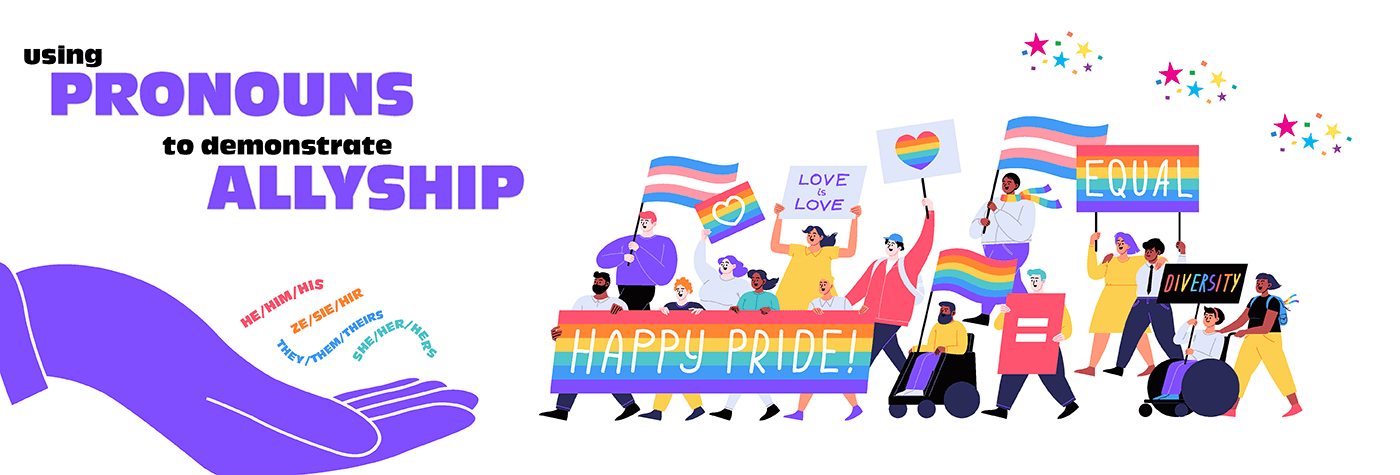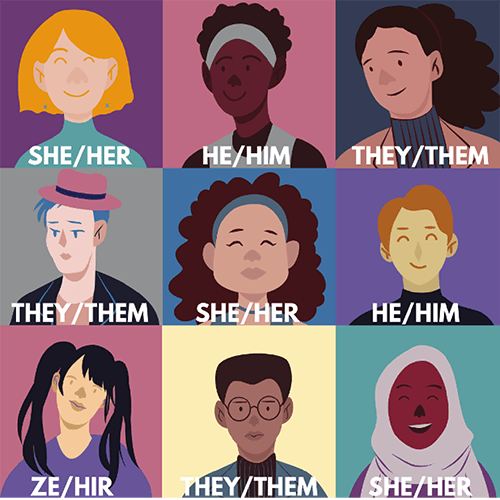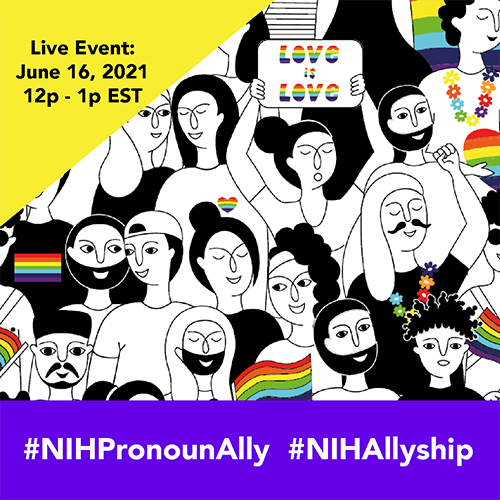
Message from
the Strategist
The purpose of our 2021 PRIDE campaign is to help demonstrate allyship, one of the most critical activities that makes the NIH a more inclusive environment for all employees, patients, and visitors.
“By sharing our own pronouns routinely, we encourage others to do the same and demonstrate that we understand the importance of sharing pronouns. Using someone’s correct pronouns is an important way of affirming someone’s identity and is a fundamental step in being an ally.”[1]

What are pronouns? Pronouns are the way we refer to each other in the third person.
People may use multiple pronouns in different combinations and there are many gender identities and pronouns beyond these listed.
People may choose to explain why they use specific pronouns, or it may be a private matter. Some people who are gender-neutral or transitioning may use non-binary/inclusive pronouns.
What does GENDER NEUTRAL & GENDER EXPANSIVE mean? An umbrella term sometimes used to describe people who expand notions of gender expression and identity beyond perceived or expected societal gender norms…
Gender-Specific Pronouns
- He, Him, His
- She, Her, Hers
Gender-Neutral Pronouns
- They, Them, Theirs
- Ze, Sie, Zie, Hir - Pronounced: zee, see, zee, hear
why PRONOUNS are important in the workplace:
- shows respect
- creates an inclusive work environment
- more people are in the workforce who identify as transgender and/or gender expansive/non-binary
PRONOUNS in action:
They are a writer and wrote that book themself. Those ideas are theirs. I like both them and their ideas.
Ze is a writer and wrote that book hirself. Those ideas are hirs. I like both hir and hir ideas.
How to use PRONOUNS to demonstrate allyship:
If you find yourself unsure of someone’s pronoun, be attentive to how others refer to this person.
If you are still unclear or concerned that people might be using the incorrect pronoun, politely and privately ask that person what pronoun they use.
[Picture: Name Card on Table] Start meetings with everyone introducing themselves and stating their pronouns.
[Picture: Email Signature Line] Include your pronouns in your email signature.
[Picture: Name Tag with pronouns listed] When attending meetings or events, add your pronouns to your name tag.
REMINDER
- he/him/his
- she/her/hers
- they/them/theirs
- ze/sie/zie/hir
BEST PRACTICES:
Acknowledge mistakes, apologize, and correct yourself when using the wrong pronoun.
Ensure that you do not make a big deal out of the mistake. Make the correction & move forward in the conversation. Most people appreciate a quick apology and correction at the time of the mistake!
Using a person’s pronouns correctly is a way to respect someone and create an inclusive environment, just as using a person’s name can be a way to respect them!
LEARN MORE: Stay up-to-date on this evolving topic by bookmarking: https://go.usa.gov/x6aj3
Authors: EDI SGM Portfolio and SGM Engagement Committee with LGBT-Fellows and Friends and Salutaris: The NIH SGM Employee Resource Group
Sources:
- “Pronouns Matter” | https://www.mypronouns.org
- “Gender Pronouns: A Provider’s Guide to Referring to Transgender Patients” | https://www.prideinpractice.org/articles/transgender-pronouns-guide/
- “Personal Pronouns” | https://teaching.cambriancollege.ca/personal-pronouns/
Print/Download this infographic.

by Gemma Martin, Louis Choporis & Bali White

Hosted by EDI and Salutaris: the NIH SGM Employee Resource Group
A Message from Leadership











